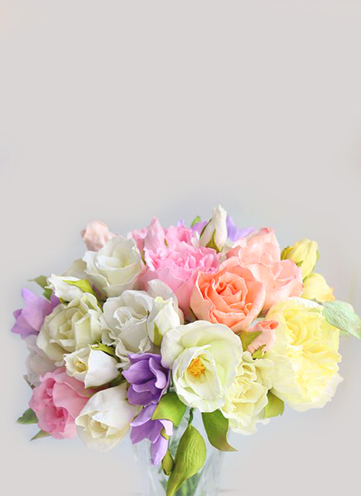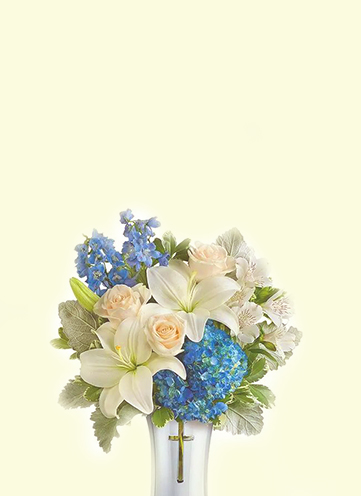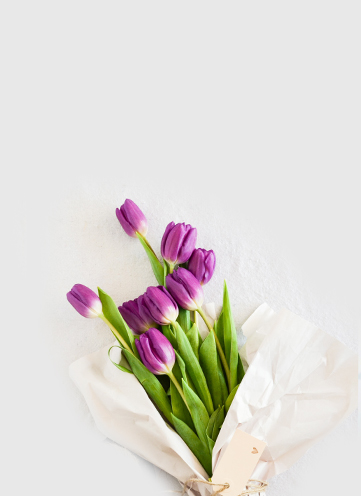Open your eyes to the incredible wonders of sunflowers
Posted on 17/08/2025
Open Your Eyes to the Incredible Wonders of Sunflowers
Sunflowers are more than just vibrant blooms that brighten up fields and gardens--they are iconic plants brimming with natural wonders. From their unique appearance and fascinating growth patterns to their immense value for ecosystems and human well-being, sunflowers are truly extraordinary. In this comprehensive guide, let us open our eyes to the incredible wonders of sunflowers by exploring their fascinating history, biology, symbolism, practical uses, and more. Prepare to be amazed by one of nature's brightest marvels!
Unlocking the Charm: What Makes Sunflowers So Special?
There is something undeniably captivating about a field of sunflowers in full bloom. Their radiant yellow petals and impressive stature command attention, while their cheerful faces seem to track the sun's journey across the sky. But what truly sets sunflowers apart from other flowering plants?
- Sun-following behavior: Also known as heliotropism, young sunflower buds exhibit a unique ability to track the movement of the sun from east to west during the day, maximizing their exposure to sunlight.
- Imposing size: Some sunflower varieties can reach staggering heights, with records documenting plants soaring over 30 feet! This makes them some of the tallest flowering plants in the world.
- Vibrant appearance: With their bold golden-yellow petals and large, seed-packed centers, sunflowers are instantly recognizable and have inspired art, literature, and design for centuries.
- Economic and ecological importance: Sunflowers are not only beautiful--they are invaluable sources of oil, food, animal feed, and ecosystem services.

The Fascinating History of Sunflowers
Origins and Domestication
Sunflowers (Helianthus annuus) are native to North America, with evidence suggesting their cultivation began as early as 3,000 BCE by indigenous peoples. This remarkable plant played a significant role in their diet and daily life, as both a food source and a symbol of spiritual and cultural significance.
- Native Americans harvested sunflower seeds for nutrition, ground them into flour, and extracted oil for cooking and skin care.
- Sunflowers also featured in art and ceremonies, representing the sun, harvest, and a connection to the natural world.
Global Journey and Agricultural Impact
The Spanish explorers are credited with introducing sunflowers to Europe in the 16th century. From there, the flower's popularity quickly spread, reaching Russia, where it became an important agricultural crop due to its adaptability and high oil content. Today, sunflowers are cultivated worldwide for their beauty and economic value, with leading producers including Russia, Ukraine, Argentina, and the United States.
The Incredible Biology Behind Sunflowers
What is Heliotropism?
One of the most astonishing features of sunflowers is their ability to follow the sun. This behavior, known as heliotropism, is most pronounced in young plants and flower buds.
- Daytime movements: Young sunflowers track the sun's movement from east (morning) to west (evening). This maximizes photosynthesis and boosts growth rates.
- Nighttime reset: At night, the buds return to face east, ready for the next sunrise.
- Adult behavior: Mature sunflowers eventually settle in an eastward direction, which helps to attract pollinators by warming the flower head.
The Mathematics of Sunflowers: The Fibonacci Sequence
Another equally mesmerizing feature is the arrangement of seeds in a sunflower's head. If you look closely at the center of the blossom, you'll notice a spiral pattern. This pattern follows the Fibonacci sequence, a mathematical series where each number is the sum of the two preceding ones (1, 1, 2, 3, 5, 8, 13, ...).
The use of the Fibonacci sequence allows sunflower seeds to be packed efficiently, maximizing space and ensuring that the plant can house as many seeds as possible for reproduction.
- Mathematicians and botanists marvel at how sunflowers embody the combination of beauty and mathematical precision found in nature.
- This spiral arrangement is not only beautiful but also highly practical for the plant's reproductive success.
Endless Varieties: Types of Sunflowers
There are dozens of sunflower varieties, each offering unique traits in terms of size, color, and usage. Exploring the diversity of the Helianthus genus truly opens your eyes to their wonders:
- Common Sunflower (Helianthus annuus): The iconic, tall, bright yellow sunflower recognized around the globe.
- Dwarf Sunflowers: Compact varieties suitable for containers and smaller gardens, often with smaller flower heads but just as much charm.
- Ornamental Sunflowers: Cultivars bred for unusual colors--such as reds, oranges, and multi-tones--often used in floristry and decorative gardening.
- Perennial Sunflowers: Species like Helianthus maximiliani return year after year and can naturalize wild spaces quickly.
- Giant Sunflowers: Towering varieties grown for competitions and seed production, sometimes exceeding 15 feet in height!
Each type of sunflower brings its own incredible wonder, enhancing gardens, landscapes, and wild spaces with color, vibrancy, and ecological value.
The Surprising Health and Nutritional Benefits of Sunflowers
Sunflower Seeds: A Nutritional Powerhouse
The edible seeds of sunflowers are among their most valuable gifts to humanity. These tiny seeds are packed with nutritional benefits:
- High in healthy fats: Especially polyunsaturated and monounsaturated fats, which support heart health.
- Rich in vitamins and minerals: Sources of Vitamin E, B Vitamins (like folate and B6), magnesium, selenium, and zinc.
- Protein boost: Sunflower seeds provide a plant-based protein source, making them ideal for vegetarians and vegans.
- Antioxidant powerhouse: Their Vitamin E and other compounds help to combat oxidative stress and inflammation.
Sunflower Oil: Cooking and Beyond
Sunflowers are one of the world's leading sources of edible oil. Sunflower oil is valued for its light taste, high smoke point, and health benefits:
- Heart-friendly: As a source of unsaturated fats, sunflower oil can help support cardiovascular health when used as part of a balanced diet.
- Versatility: Used in salad dressings, frying, baking, and as a base for many processed foods.
- Skin and hair care: Sunflower oil is found in cosmetics, moisturizers, and hair treatments for its soothing, hydrating properties.
The Role of Sunflowers in Ecosystems
Ecological Services
Sunflowers are not just beautiful--they support entire ecosystems with their presence:
- Pollinator haven: The nectar and pollen of sunflowers attract bees, butterflies, and a myriad of beneficial insect species.
- Bird sanctuary: When left to mature, sunflower heads provide a feast for birds like finches and sparrows, especially in winter.
- Soil health: Their long roots help aerate the soil and reduce erosion. Sunflowers are also used in phytoremediation to extract heavy metals and toxins from contaminated land--a green way to clean the earth!
Symbolism and Cultural Importance
Throughout history, the sunflower has been embraced as a symbol of numerous positive qualities and ideals:
- Happiness and positivity: Their sunny appearance makes them a universal symbol of joy.
- Loyalty and adoration: The sunflower's unwavering attention to the sun is often equated with steadfast love and devotion.
- Nourishment and abundance: For many cultures, sunflowers represent harvest, fertility, and sustenance.
- Artistic inspiration: From Van Gogh's iconic sunflower paintings to folk art motifs, sunflowers have inspired creative expression around the globe.
How to Grow Sunflowers: Transform Your Garden
Simple Steps to Stunning Sunflowers
Anyone can enjoy the marvels of sunflowers at home. They are remarkably easy to grow, and their rewards are abundant. Here's how:
- Choose your variety: Decide between giant sunflowers, dwarfs, or ornamental types, depending on your space and preference.
- Pick a sunny site: Sunflowers thrive in locations with full sun--at least 6 to 8 hours daily.
- Planting: Sow seeds directly into the soil after the last frost. Plant seeds 1 inch deep and 6 inches apart.
- Watering: Keep soil consistently moist until seeds sprout, then water moderately. Mature sunflowers are drought-resistant but benefit from regular watering.
- Support growth: Tall varieties may need staking for stability, especially in windy areas.
- Harvest: Collect seeds when the back of the flower heads turn brown and dry--perfect for snacking, bird feed, or next year's crop!
Growing sunflowers is a rewarding journey that brings beauty, food, and joy to your home.
Sunflowers in Art, Literature, and Popular Culture
The beauty of sunflowers has not only inspired scientific curiosity but also captured the hearts of artists, writers, and dreamers through the ages. From the vibrant brushstrokes of Vincent van Gogh's "Sunflowers" series to the poetry and stories of ancient and modern cultures, these majestic blooms hold a beloved place in the collective imagination.
Look for sunflowers in everything from children's books, songs, and philosophical treatises to fashion, decor, and tattoo art. Their image is a timeless reminder to seek light, growth, and happiness amidst our daily lives.

10 Remarkable Facts About Sunflowers
- Highest recorded sunflower: The tallest sunflower ever reached 30 feet 1 inch, grown by Hans-Peter Schiffer in Germany.
- Sunflower seeds go to space: NASA astronauts have grown sunflowers in space as part of educational and scientific programs.
- Sunflower state: Kansas is officially known as "The Sunflower State."
- Thousands of tiny flowers: Each sunflower head is actually composed of up to 2,000 mini-flowers or florets.
- Pollination powerhouse: Sunflowers support pollinator populations crucial to worldwide agriculture.
- Edible petals: The petals and leaves of some sunflower species can be used in salads or as decorative garnishes.
- Symbol of hope: Following the Chernobyl disaster, sunflowers were used to help soothe contaminated soil.
- Genetic diversity: The genome of the sunflower has been sequenced--helping scientists improve this vital crop.
- Natural dye: Sunflowers yield yellow, purple, and black dyes for textiles and crafts.
- Year-round beauty: Sunflowers can be enjoyed fresh in summer or dried for long-lasting arrangements.
Conclusion: Open Your Eyes & Embrace the Wonders of Sunflowers
The next time you pass by a blooming sunflower, pause to open your eyes and truly appreciate its wonders. These remarkable plants stand tall as beacons of beauty, mathematical marvels, ecological benefactors, and sources of endless inspiration. Whether you grow them in your own backyard, nourish yourself with their seeds, or simply admire their golden faces from afar, sunflowers offer untold joy and profound benefits to people and the planet.
So, let the incredible wonders of sunflowers brighten your world--today, tomorrow, and always.





